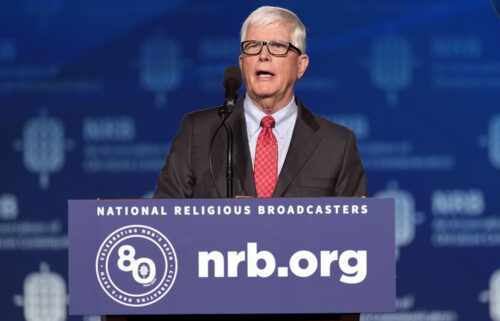Element found in our teeth detected for the first time in galaxy 12 billion light-years away
By Ashley Strickland, CNN
We truly are made of star stuff, as astronomer Carl Sagan once said.
For the first time, astronomers have detected an element found in our bodies in a galaxy that is more than 12 billion light-years away.
The element, fluorine, can be found in our bones and teeth as fluoride.
“We all know about fluorine because the toothpaste we use every day contains it in the form of fluoride,” said lead study author Maximilien Franco, an astrophysics postdoctoral research fellow at the University of Hertfordshire in the United Kingdom, in a statement. “We did not even know which type of stars produced the majority of fluorine in the Universe!”
The elements found across our solar system, on Earth and even in our own bodies originated inside the cores of stars, which released them in stellar explosions. But the mystery of how fluorine was created within these stars has persisted.
Researchers used the Atacama Large Millimeter/submillimeter Array of telescopes in Chile to make the detection of fluorine in an incredibly distant star-forming galaxy.
Massive star origins
Fluorine was present as hydrogen fluoride in gas clouds of the NGP-190387 galaxy. The light from this galaxy has traveled over 12 billion years to reach us, so astronomers view the galaxy as it appeared when the universe was only about 1.4 billion years old.
The stars that released fluorine throughout the universe likely lived fast and died young, the researchers said, which pinpoints Wolf-Rayet stars as their likely origin. These evolved stars are incredibly massive, but they only survive for a few million years — a short timeline when compared with the 13 billion years our universe has existed.
Only some massive stars evolve into Wolf-Rayets as they approach the end of their lives. This stage lasts a few hundred thousand years, but in the lifetime of a star, that’s very short. Only one out of a hundred million stars are massive enough to be Wolf-Rayets.
Previously, researchers thought Wolf-Rayet stars were the likely sources of fluorine, but this direct detection confirms it.
“We have shown that Wolf-Rayet stars, which are among the most massive stars known and can explode violently as they reach the end of their lives, help us, in a way, to maintain good dental health,” Franco said.
A study detailing these findings published Thursday in the journal Nature Astronomy.
Fluorine and the early universe
Other potential sources of fluorine that scientists have considered include asymptotic giant branch stars, which are pulsing stars with masses a few times that of our sun. But the evolution of these celestial bodies occur over billions of years, which would take too long and wouldn’t explain the amount of fluorine detected in the distant galaxy.
“For this galaxy, it took just tens or hundreds of millions of years to have fluorine levels comparable to those found in stars in the Milky Way, which is 13.5 billion years old. This was a totally unexpected result,” said study coauthor Chiaki Kobayashi, a professor at the University of Hertfordshire, in a statement. “Our measurement adds a completely new constraint on the origin of fluorine, which has been studied for two decades.”
Finding fluorine in such a distant galaxy expands the reach of this element. Prior to this discovery, it had only been detected in our Milky Way galaxy and its neighbors, as well as in some distant quasars, or bright celestial objects that are powered by supermassive black hole engines at the center of some galaxies.
But this detection places fluorine as an element that existed early on in the universe.
Researchers look forward to observing the galaxy using the Extremely Large Telescope, currently under construction in Chile and expected to begin observations in 2027, which could reveal more details about NGP-190387 and its mysteries.
The-CNN-Wire
™ & © 2021 Cable News Network, Inc., a WarnerMedia Company. All rights reserved.


